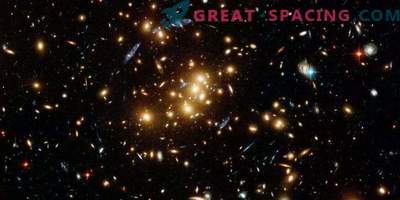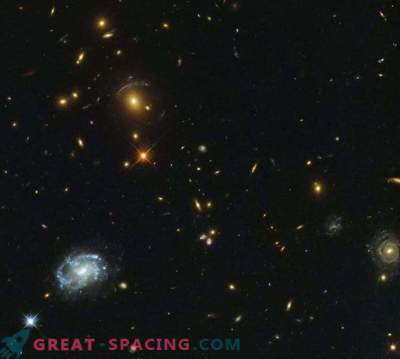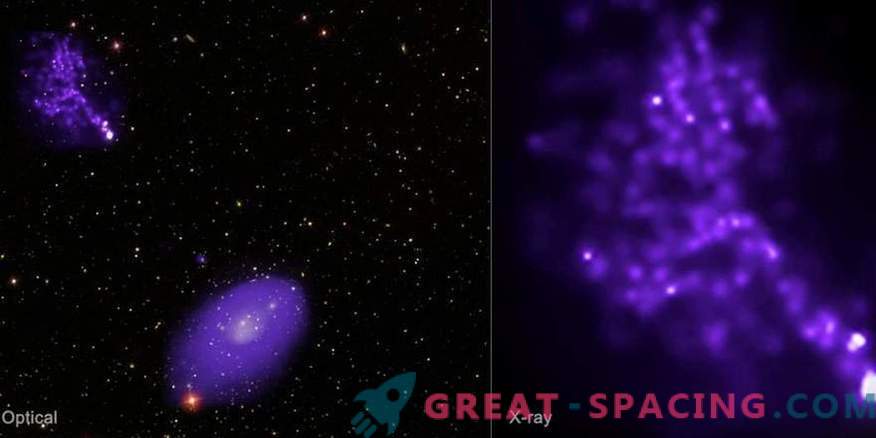
Astronomers took advantage of data from the NASA Chandra X-ray Observatory to get this amazing image of a giant tail of hot gas that stretches a million light years behind the galactic group. Such discoveries allow scientists to better understand the environment and the conditions under which the greatest universe structures develop.
Galactic clusters are considered the largest scale structures in the Universe, held by gravity. They are capable of containing hundreds and thousands of individual galaxies, but the lion's share of the mass falls on hot gas, which emits X-rays, and dark matter. How did these giants grow?
A new image demonstrates one of the ways: the capture of galaxies by the powerful gravity of a cluster. On the left, you can see the widescreen panorama of the Abell 2142 cluster. It contains hundreds of galaxies embedded in a gas with a heating of a million degrees (purple - an overview of Chandra). The center of the galactic cluster is in the middle of the violet radiation (lower part of the frame). Only the densest hot gas is displayed here, which means that the lighter (farther from the middle) is not shown in violet emission. The bright X-ray tail (top left) is aimed directly at Abell 2142. On the right is a closer look at the structure of the tail. A group of galaxies (four bright ones) is located near the head. The direction of the tail and the sharp leading edge of the hot gas around the galactic group indicate that the group falls almost directly to the center of Abell 2142. The optical and X-ray frames show large views of four galaxies (G1, G3, G4 and G5). G2 became the background, not a member of the group.
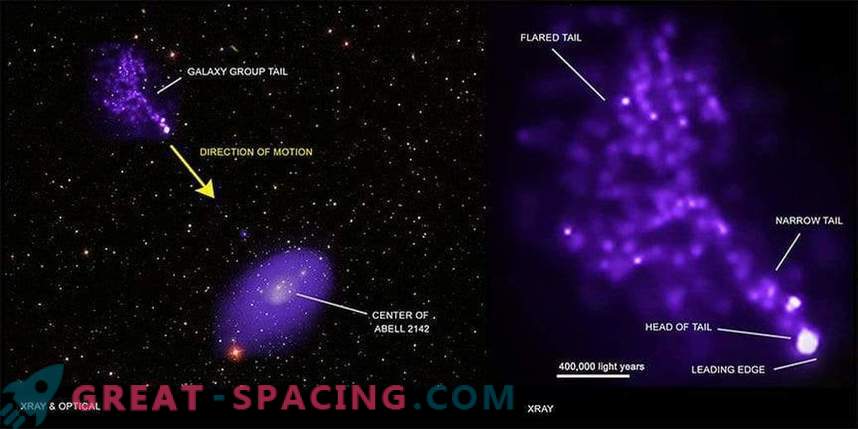
When the galactic group falls directly into Abell 2142, some of the hot gas is eliminated. As the gas moves away, it forms a straight and relatively narrow tail that extends over 800,000 light years. The shape of the tail suggests that the magnetic fields around it function as a shield.
The underside of the tail flares more top. Such an asymmetry can appear due to a flash from a supermassive black hole in one of the galaxies in a group or from the merging of galaxies. Such events lead to the fact that some parts of the gas will push out much easier.
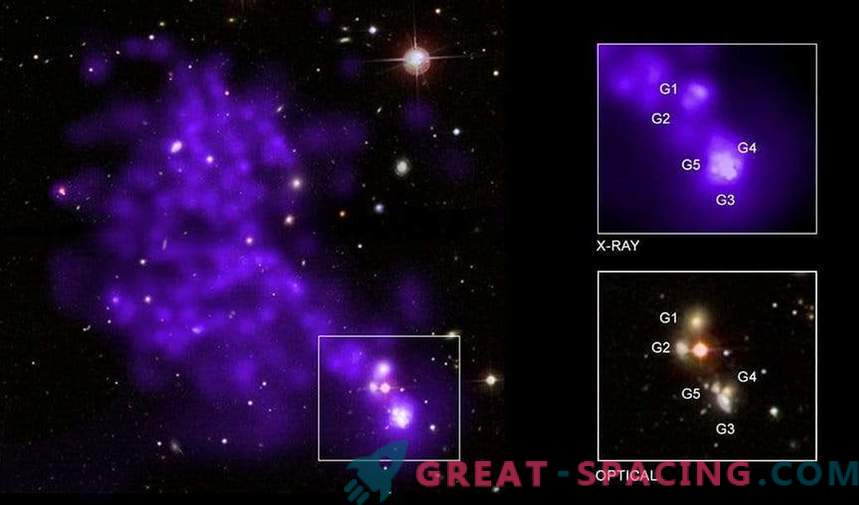
Chandra’s new findings also confirm that two of the four bright galaxies G3 and G4 accommodate fast-growing supermassive black holes. These sources closely overlap in the image of Chandra.







